Artwork and visual symbolism seen in a church building often make a confession long before parishioners hear what is confessed in the liturgy. Some of the symbolic meaning, however, may be lost to us. This is the first of nine articles devoted to those images which we often see — but may not always understand — in the sanctuary.
The Bible records God working through creation to save His people and to reconcile His creation. God’s people have sought to echo the metaphors found in Scripture as they provide art for the church. The Holy Scriptures remain the source of the images (shepherd, angel, anchor, resurrection), yet when artists sought visual inspiration for their depictions, they often found beneficial examples from pagan artwork. Just as Jesus’ parables employed normal life to illustrate the mysteries of the Kingdom of God, so Christian artists have often found examples from non-Christian artists of beneficial ways to depict the teachings of Scripture.
What are some of the early Christian images and ideas that we still see today? Where did they come from? Why were they used? The answers are as varied as the background of each symbol.
Hebrew customs
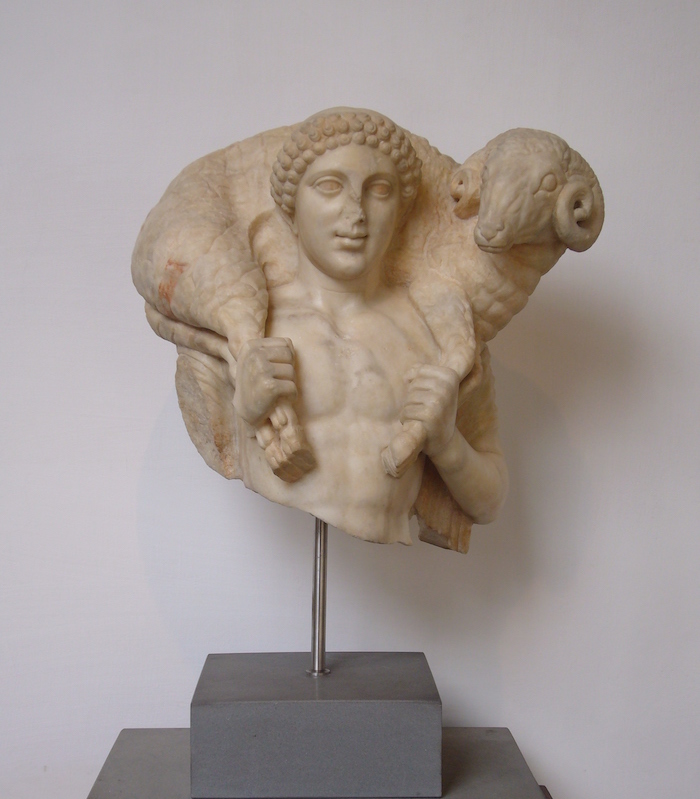
To understand some early symbols, we must first understand the Hebraic customs and those of neighboring cultures that existed at the time of Christ. While the Jews were keen to avoid blatant offenses against the commandment concerning graven images, they were not opposed to ornamentation. They often took cues from motifs found at the temple, and floral themes consistently found their way onto Jewish manuscripts, into their homes and onto everyday objects.
They were also fully aware of heroes from Scripture. King David was arguably their greatest earthly hero, both as ruler of the chosen people and as brave shepherd boy. The Hebrews would also visually present the gentle pastoral themes written in the Psalms.
At the time of Christ, however, Israel was not a cultural island. Surrounding peoples influenced Israel’s culture at every turn. The Israelites were also force-fed the Babylonian culture during their exile there. When Roman rule marched into the land, it brought along its own customs and religion, some of which were borrowed from the Greeks.
One common thread that ran through many of these cultures was the pastoral history of shepherding. Sheep were an economic commodity, and the vocation of shepherd found its way into different religious beliefs.
David, the shepherd
While being careful not to violate the command against graven images, later medieval Jewish manuscripts included illuminations of biblical figures, such as King David, the shepherd. He was not worshipped as a deity, but they held him in high regard.
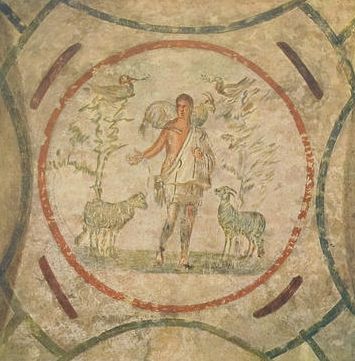
Among the plethora of deities that Roman rulers brought along in their baggage was Hermes. One common depiction of this god was Hermes Kriophoros, or “Hermes the ram-bearer.” This image of a Roman copy of a Greek sculpture was created during the fifthcentury B.C. Hermes carries a sheep over his shoulders and has a pleasant demeanor. The primitive pose is a mirror image of the quintessential Christian depiction of the Good Shepherd.
It is clear that the Early Church shrewdly took familiar images and put them to better use. The representations of the Good Shepherd, while visually connected to the Hebraic David and the Greco-Roman Hermes Kriophoros, portray a far different Being than either visual donor. Upon reading John 10, early Christian artists might have used some popular imagery to illustrate Jesus’ teaching about the Good Shepherd who is both God and man.
Resurrection phoenix
The Good Shepherd, however, was not the only instance in which the Early Church reappropriated images from other cultures. The phoenix was a mythological bird from Greek folklore, of which Bennu was an Egyptian counterpart. Part of the myth was that the bird would be consumed by fire but would later rise from its own ashes. Admittedly, such pagan beliefs are not ideal images on which to build Christian symbolism, but the church saw strong similarities to the death and resurrection of Jesus Christ and could not resist using the symbol for its own benefit.
The symbol is still used within the church and occasionally finds its way to conspicuous places. A good example is Grace Lutheran Church, Regina, Saskatchewan, whose altar has a phoenix carved into it, along with the quote from Scripture, “I am the resurrection and the life” (John 11:25).
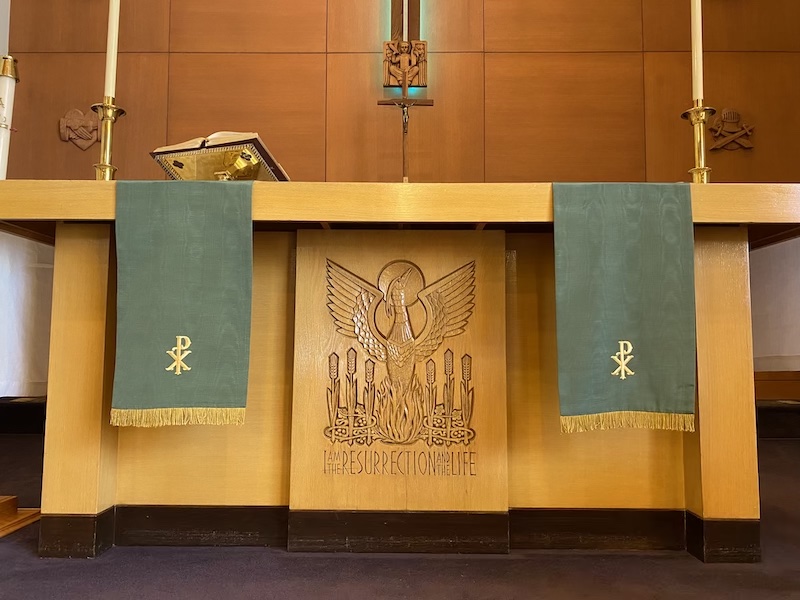
Other early symbols
Early Christians also used nautical themes. Anchor symbols not only portrayed the Lord’s steadfastness, but they also gave a gentle nod to the cross via the anchor’s crossbeam (Heb. 6:19). Early Christians also frequently used fish. We are so accustomed to the Greek ichthus acrostic emblazoned on the trunks of cars that we hardly give them a second thought. Early Christian artwork often simply showed natural renditions of fish rather than the graphically simplified versions used today.
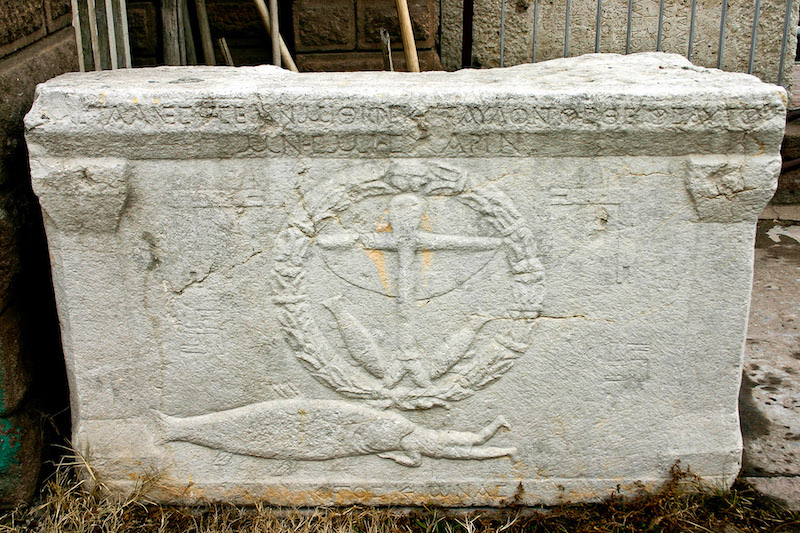
One of the more unnatural yet fascinating depictions is on a fifth-century ossuary found in Konya, Turkey. It has, among other symbolism, the image of a fish in the process of swallowing a man. The carving is a bit unnerving to look at — that is, until you realize that the imagery depicts Jonah, which in turn illustrates Christ’s admonition to the Jews that “No sign will be given … except the sign of the prophet Jonah” (Matt. 12:39). As a symbol of the resurrection, it is appropriate for such a funerary vessel.
One of the most common Christian symbols used today originated with the Roman emperor Constantine the Great. The Chi-Rho, the fusion of the first two Greek letters in the word “Christ,” was employed as an imperial device by Constantine, and he placed it on the shields of his soldiers. Interestingly, the abbreviation was also used in pre-Christian times as a marginal notation device on manuscripts to mark particularly valuable sections of text. We do the same today when marking passages with an asterisk, which in turn points to another early Christian symbol, the Iota-Chi, the Greek monogram for Jesus Christ.
The next article in this series will discuss common imagery for portraying the angels and archangels of heaven.
Fig 1 — © Lalupa / CC BY-SA 3.0. Access here.
Fig. 2 — Good Shepherd in catacomb of Priscilla (second half of the 3rd century), (1903) by Joseph Wilpert (1857–1944).
Fig. 3 — The Rev. Aaron Gust. Used with permission.
Fig. 4 — Image courtesy of www.HolyLandPhotos.org.


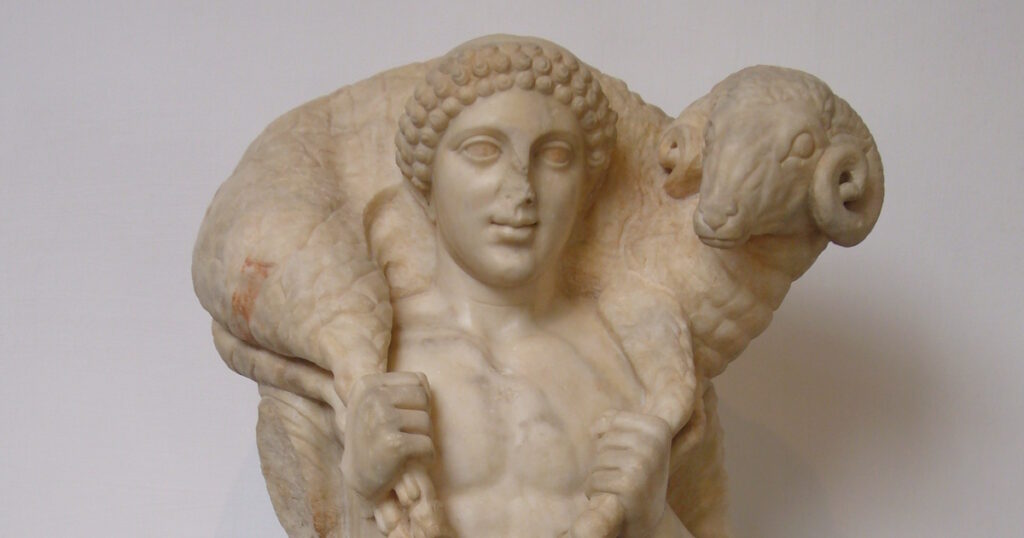
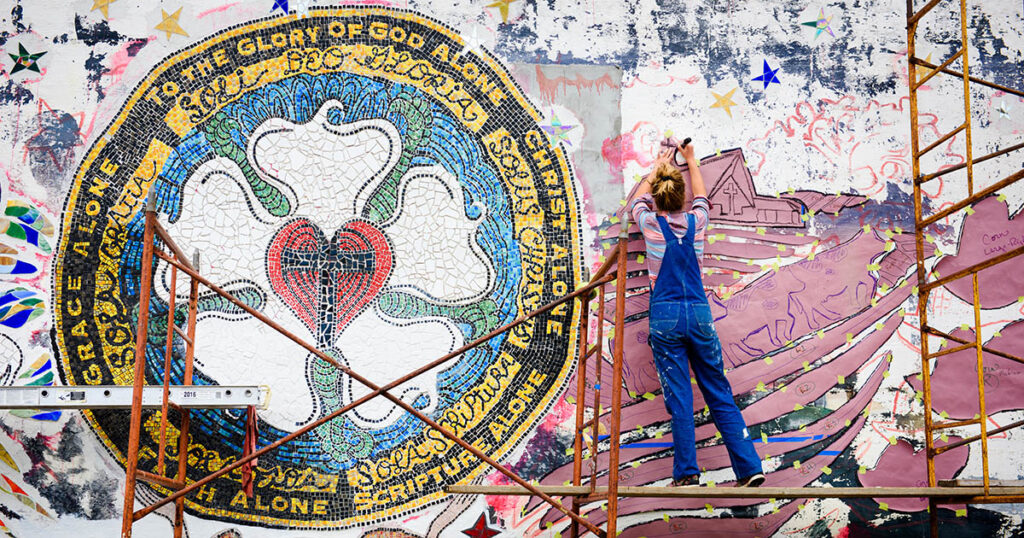
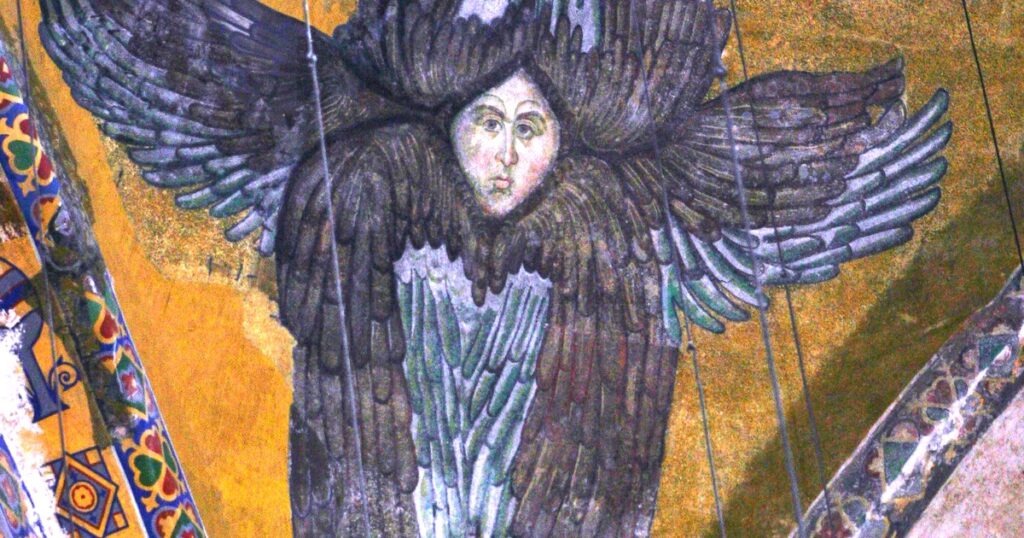
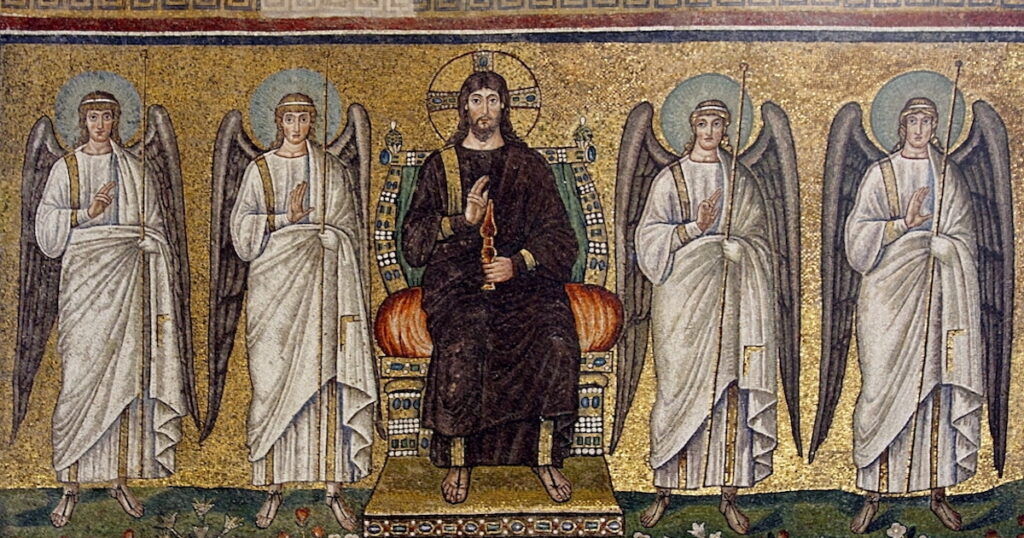
The Chi-Rho was also the first two letters of the word “gold” in greek. The symbol can be found on ancient Roman gold coins. (Museum in Trier)
Just plain “X” was also used. I’ve seen it in museums and churches in my travels.
The first depiction of the sign of Jonah on an ossuary can be found in a first century tomb in Israel. There is some controversy about the figure of the fish spitting out Jonah. I definitely see a fish. Some see an amphora bottle and some, a Nephesh tower. The word “Yonah” is spelled in Hebrew on the fish’s mouth/cheek. Others say it says something similar but different. There is also controversy about the simple stylized fish on the border (faint but there).
All that being said, I can see why the earliest Christian symblol on an ossuary would be ignored or attacked. It’s in a tomb near the one called the Jesus family tomb.